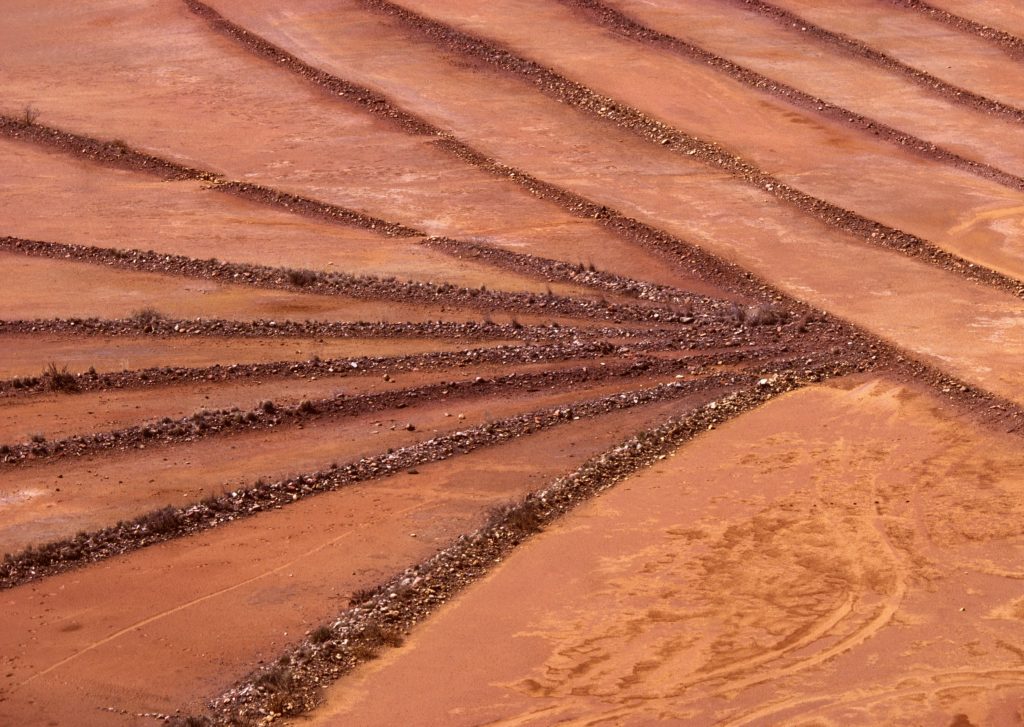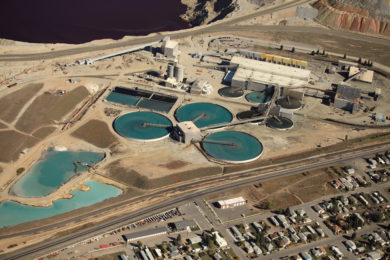Today, the need for extraction and refinement of copper and other transition materials is essential to world development, as we navigate a transition to more sustainable energy technologies, Saleem Varghese and Carola Sepulveda* write. But as its importance has grown, copper ore grades have decreased at a rate of approximately 25% over the last decade – increasing demand pressures on the commodity – meaning miners need to process more material to achieve the same output.
Today’s copper mines also need a lot of water. A 50,000 t/d ore copper mine will consume around 30,000 cu.m/d of fresh water. This isn’t a problem in some geographies, but it’s critical to the viability of operations in some of the most copper-rich regions on earth, such as the Americas.
Copper miners in the Americas are united by the need to secure their water supply, reduce water consumption and manage their environmental impacts. What can they do to overcome these interrelated challenges, while meeting their production targets?
Where are we now?
Mining and processing depend on vast amounts of water, and for South American miners this leads to complications. The copper mines of the Americas are frequently located in arid and mountainous regions where water is scarce. Indeed Chile, a leading copper mining nation, is currently enduring a ‘mega-drought’ of 13 years and counting. Here, water is a national security issue, leaving some rural communities reliant on tankers to supply fresh drinking water.
This importance is recognised by miners as well, with local community impact and water management being the industry’s top ESG risks, concerning 78% and 76% of respondents, respectively, according to research by EY.
Indeed, by 2040, all Chilean copper mines are expected to be in areas suffering from water stress. Likewise, water efficiency is increasingly becoming a serious problem, with the water-energy nexus shifting and water becoming more expensive. For water-intensive mining processes, lack of access and an increasing price per litre can be potentially difficult hurdles to overcome.
For modern copper miners, there is a historic separation between mining and water operations which must be reengineered to improve water access and use. As mines see their speed to market and output slowed due to water stress, there are three key challenges which, if solved, will help the industry as it extracts the materials to electrify the world. Only by managing water and mining operations together and bringing in collaborative expertise, can miners tackle the challenges before them and deliver at pace.
Understanding the three critical factors for mining success
Water management is the key ESG factor copper miners face today, and this manifests in three key issues: one historic, one present and one which poses a challenge now and will only get worse.
The first challenge is securing a reliable water supply.
The second challenge is reducing water consumption and increasing water efficiency, to ease pressure on water supply.
And the third challenge is minimising environmental risks.
Overall, water issues could affect the viability of mining projects in many regions around the world. Mining operations require significant amounts of water for processes including mineral extraction, ore processing, dust suppression and more. However, in many areas such as in Latin America water is becoming scarce due to drought, climate change and overuse.
Supplying modern mines
To supply mines and refining plants, mines have recently moved away from shared groundwater supplies to desalinated water. Desalination is more expensive but offers less impact on local communities and environment. Given that mines in the Americas are usually distant from the coast and at higher altitudes, desalination represents a difficult challenge for engineers to make feasible. Alternatively, to secure groundwater lifting licences, consumption needs to be effectively managed, and any water put back into the environment must be treated effectively.
Solving the supply challenge by altering water consumption
In effect, the first problem, supply, can be eased by tackling the second issue: water consumption. If supply is the historical issue, using water more efficiently to alter consumption is the issue of today. Whether it’s water use in particle flotation or lost in tailings slurries (for transportation and storage), making sure these processes are done as economically, efficiently and sustainably as possible is key. This is where new technologies and solutions come in.
An example of this is seen in the storage of tailings. Where water cost and procurement are not an issue in different locales and climates, the storage of tailings in a slurry form is common. In arid conditions where water resources are strained, the economic sense behind storage slurries evaporates. Slurries not only take water out of the operational system and into a closed storage system (which will need to be replaced), but it also allows the potential for water loss through evaporation and seepage.
Dry storage techniques – which have increased in scale in recent years – are the obvious solution with greater water reclamation from tailings and increased safety in storage. Moreover, high-altitude mines and liquid-based storage pose a potential risk to those downstream, making dry storage safer and more effective.

Another example of reducing consumption can be through greater efficiency when appraising the ores to be processed. This can be done with advanced ore sorting technologies such as those offered by NextOre, a cutting-edge technology able to provide real-time analysis of newly extracted ores. Rather than typical analysis methods which can detect mineral particles at or near the surface of ore, NextOre’s magnetic resonance technology can evaluate and sort much coarser ore with accuracy and speed. This allows miners to selectively remove the waste or lower grade material before it enters the processing plant – ultimately saving water, with only the best ore to be utilised.
A common misconception about water projects is that they are expensive and require significant resources to implement. While water projects can be costly, it is important to consider the long-term benefits that they bring, such as increased water availability, environmental impact mitigation, improved access to clean water for communities, and further growth for industry.
Saving water, and protecting the local environment
The third issue, which is increasing in importance by the day, is managing the risk of localised environmental issues, especially acid mine drainage that can contaminate the natural environment.
This is an issue that is only going to become harder to tackle as the ores we are required to mine become lower grade and the ability to avoid sulphur-forming ores is lost. In this respect, new technologies can help as more challenging ores are treated.
Overall, the challenges faced by the industry cannot be addressed by a single solution, or by siloed teams attacking from all angles. A unified, collaborative approach will be needed for the best results.
The design and implementation of a water management approach should be tailored to the specific mine site needs and context of the community and stakeholders involved. For projects to succeed in the future, they must integrate mining, water and environmental capability under one roof – from front-end studies to delivery, and operations through end-of-life. Miners will benefit from working with a collaborative partner to consider mining operations and water issues holistically, and how new mining technologies can operate synergistically to help tackle these water challenges.
Why internal and external collaboration is key for businesses
The mining industry will struggle to solve its water challenges alone. And it doesn’t need to. The complexity of modern mine operations – and need for diversified expertise – simply reflects the scale of the energy transition, and the need to continuously improve environmental outcomes to maintain the social licence to operate.
The answer is not straightforward and requires a deep understanding of operations, mining, water management and the surrounding community. Collaboration needs to be coordinated to develop and implement real solutions for the enduring issues facing miners.
If done right, copper mining will bring lasting value to communities through low-impact operations that share the benefits of water infrastructure and provide meaningful local economic contributions. This is the responsible way to ensure we deliver the copper our world desperately needs.
*Saleem Varghese is Copper Growth Lead at Worley, while Carola Sepulveda is Water for Mining Lead, Peru, at Worley










